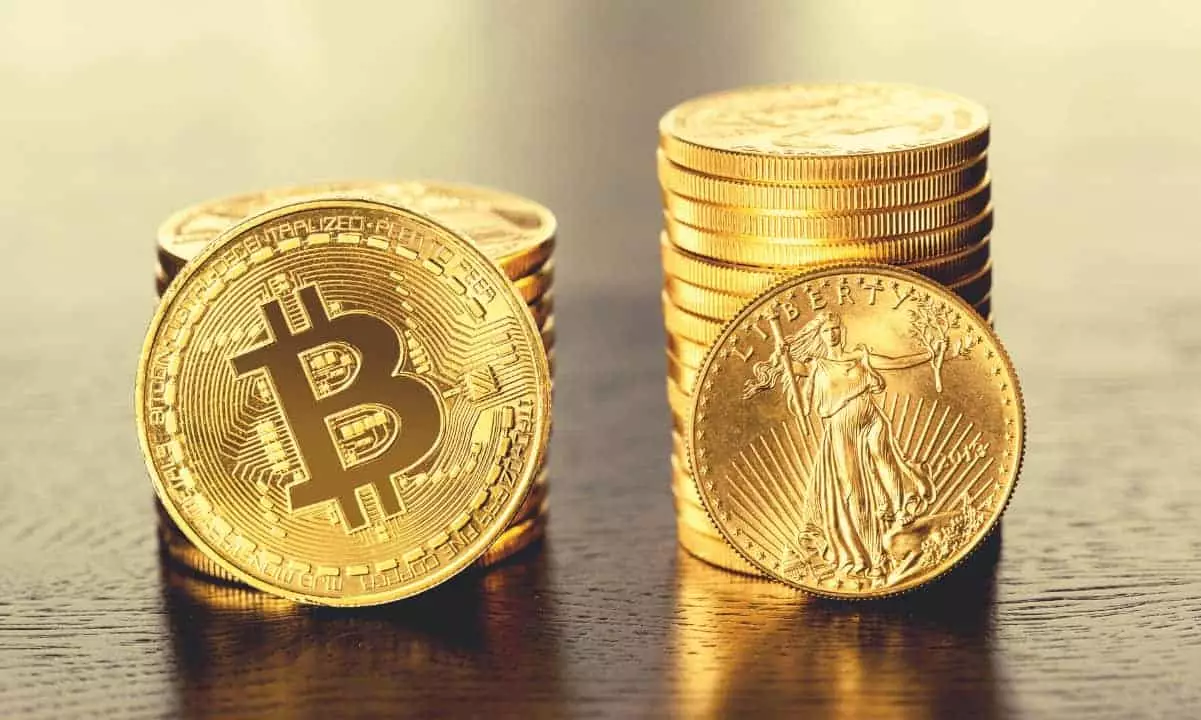The recent surge of gold crossing the $3,000 threshold is more than a mere statistical achievement; it is a powerful indicator of deeper economic anxieties channeling investor sentiment. Analysts observing this meteoric rise often regard it as harbinger of traditional safe-haven assets reclaiming their historical status against the backdrop of modern financial turmoil. Indeed, gold’s elevation signals not just a fleeting market phenomenon but a tangible shift in the dynamics of wealth preservation.
Geopolitics and Economic Insecurity: The Hair-Raising Backdrop
The surge of gold has coincided with an increasingly perilous global landscape characterized by geopolitical strife. Conflicts and tensions abound in myriad regions, contributing to a general sense of unease. As citizens and investors witness nations grappling with instability, many are resorting to age-old investment strategies: protecting wealth with tangible assets. The rising strains of international relations compel astute investors to hedge against the unpredictable currents of fiat currency and stock markets, illustrating why gold is reclaiming its throne.
Moreover, inflation has been eating away at economic stability, another crucial factor behind gold’s ascent. With inflation rates fluctuating wildly, many individuals are re-examining their positions in traditional currencies that feel increasingly unreliable. The all-consuming nature of inflation—forging uncertainty around the economic futures of both nations and individuals—further solidifies gold’s image as a haven in which to secure value.
Central Bank Strategies: The Procurement Quagmire
Adding another layer to this multi-faceted situation is the unprecedented purchasing power exercised by central banks around the globe. The continued stockpiling of gold—exceeding 1,000 tonnes annually for three years—has led to serious supply constraints. As demand for physical gold soared, vault inventories surged by 115% in a mere two-month stretch, underlining the urgency felt by more institutions and individuals alike.
Each ounce hoarded strips away potential supply from the market, leading naturally to price increases. It’s hardly a mystery that when central banks recognize an asset’s appeal, their collective buying power can create a perfect storm of upward momentum. For an asset like gold, these forces are not mere sideshows, but driving motivations behind sustained price elevation.
The Decline of Digital Assets: Bitcoin’s Disappointment
While gold is experiencing remarkable highs, Bitcoin’s struggles tell a different story. Described once as “digital gold,” it has become increasingly apparent that the cryptocurrency cannot hold its ground against the allure of physical assets. A recent revelation highlighted Bitcoin’s exchange rate compared to gold: dropping from 36.3 ounces to 27.7 ounces per single BTC. This dissonance hints at a fundamental misstep in Bitcoin’s identity and role in investment portfolios—its perceived value may not alternate between traditional and digital assets as many hoped.
Peter Schiff, a figure notorious for his bullish sentiments toward gold, further amplifies the narrative of gold’s superiority over BTC. According to Schiff, Bitcoin operates more like a volatile tech stock than a reliable store of value. When one considers Bitcoin’s erratic performance intertwined with NASDAQ fluctuations, it becomes increasingly questionable if Bitcoin can sustain itself as a credible alternative to sound investment practices that have endured for millennia.
A Role in Modern Investment Strategies
For investors today, high inflation, political instability, and central bank purchasing trends paint a vivid picture of risk management. New investment strategies—the likes of which champion both conventional wisdom and innovative diversifications—are not just advisable but essential. As central-right liberalism advocates pragmatism, the current financial climate reinforces old truths: specific assets like gold shield wealth better than many of their modern competitors.
Observing the escape from dollar reliance into tangible asset value confirms that faith in traditional safeguards and steady growth is not antiquated but rather timely. As we navigate this ever-evolving landscape, it’s imperative that we ground our investment philosophies in history while remaining adaptable to modern challenges. The solid investment instincts of centuries past may finally outcompete the allure of modernity—a sentiment deserving of profound consideration among today’s investors.


Leave a Reply